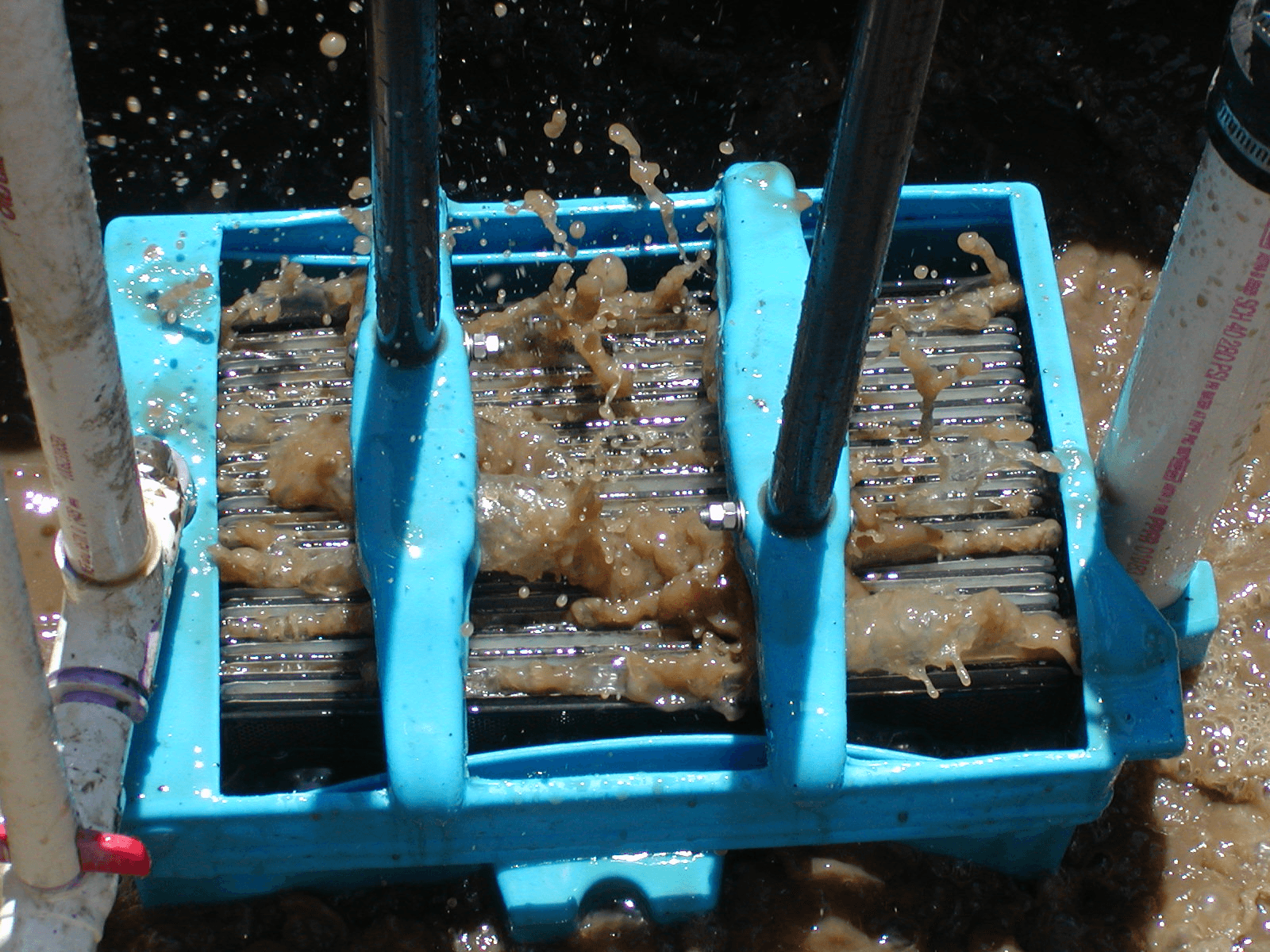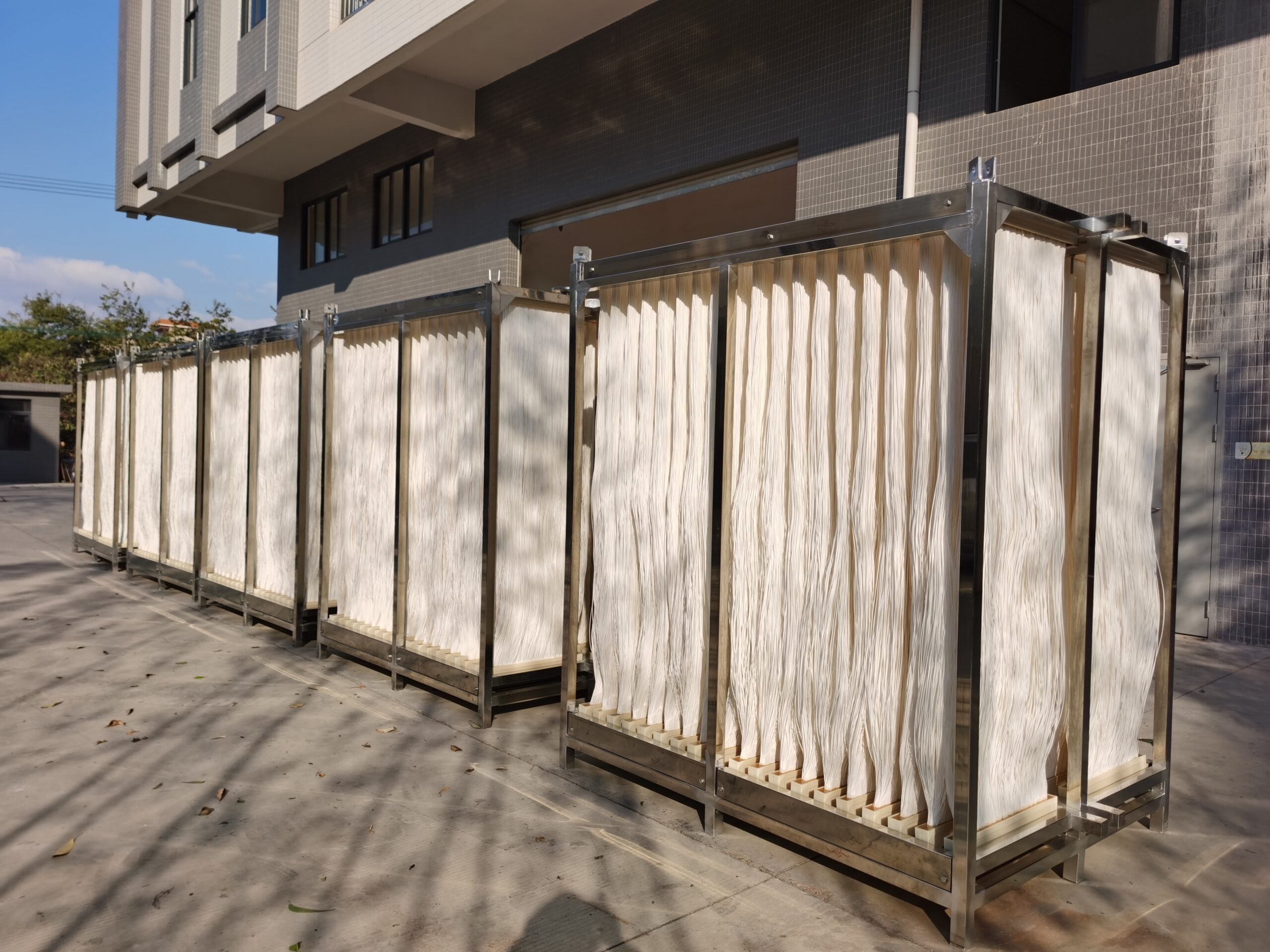How Membrane Bioreactor Technology Is Revolutionizing Wastewater Treatment
How Membrane Bioreactor Technology Is Revolutionizing Wastewater Treatment
Blog Article
Just How Membrane Layer Bioreactors Are Revolutionizing Water Purification Solutions
The appearance of membrane bioreactors (MBRs) stands for a significant development in the area of water filtration, combining organic treatment procedures with cutting-edge membrane layer filtering innovations. This combination not just boosts the high quality of dealt with effluent however also addresses urban space constraints, making MBRs especially appropriate for densely populated locations. As global water deficiency increases, the function of MBRs in helping with safe and clean water reuse and sustainable water management comes to be progressively critical. The effects of this modern technology expand beyond effectiveness-- what chances and obstacles lie in advance for its prevalent application?
Review of Membrane Bioreactors
Membrane layer bioreactors (MBRs) represent a substantial innovation in water filtration innovation, as they combine organic treatment procedures with membrane layer filtering. This integration boosts the performance of wastewater therapy by utilizing microbes to degrade organic contaminants while all at once utilizing semi-permeable membranes to different treated water from suspended microorganisms and solids.
The MBR system normally includes a biological activator where the microbial population metabolizes impurities, followed by a membrane filtration unit that maintains biomass and allows just clean water to travel through. This twin functionality results in higher effluent top quality contrasted to standard treatment techniques. MBRs can be run in both batch and continual circulation settings, offering flexibility in layout and application.
They likewise enable the recuperation of water for reuse, therefore contributing to water sustainability campaigns. In general, MBRs are at the forefront of improving water therapy efficiency and top quality, showcasing the potential for cutting-edge remedies in environmental administration.
Benefits of MBR Innovation
The integration of biological treatment with membrane layer filtration provides various benefits for water purification processes. One of the key advantages of Membrane layer Bioreactor (MBR) technology is its capability to efficiently eliminate both organic and inorganic pollutants, causing top notch effluent. The membranes serve as a physical barrier, stopping put on hold solids and virus from travelling through, which improves the general security and integrity of treated water.
In addition, MBR systems need a smaller sized impact contrasted to traditional therapy methods, permitting much more reliable space application. This small style is particularly useful in metropolitan setups where land is limited. MBRs additionally show functional versatility, accommodating differing influent top qualities and circulation rates without significant efficiency deterioration.
Additionally, the procedure offers improved nutrient elimination capacities, specifically for nitrogen and phosphorus, which are essential for preventing eutrophication in obtaining waters. The minimized sludge production connected with MBR technology additionally translates to reduce disposal prices, making it a cost-effective service in the long run - Membrane Bioreactor. On the whole, the benefits of MBR technology setting it as a leading selection for cutting-edge and sustainable water purification systems, resolving both ecological and financial issues
Applications in Water Purification
Applications of Membrane Layer Bioreactor (MBR) technology in water filtration are diverse and impactful, attending to numerous therapy needs throughout several sectors. MBRs efficiently incorporate organic treatment procedures with membrane layer purification, making them ideal for local wastewater treatment, industrial effluent administration, and also potable water reuse efforts.
In municipal settings, MBRs are progressively employed to enhance the top quality of dealt with wastewater, permitting compliance with rigorous discharge regulations and helping with the recycling of water for watering and non-potable usages. Their compact style also makes them ideal for metropolitan atmospheres where space is limited.
Industrially, MBR modern technology is used to treat process water and wastewater, particularly in fields such as food and drink, pharmaceuticals, and textiles. By effectively getting rid of contaminants the original source and suspended solids, MBRs aid industries minimize environmental effects while recovering beneficial sources from wastewater streams.
Furthermore, MBRs are gaining traction in decentralized water therapy applications, where small-scale systems can be released in remote locations or creating regions. This adaptability makes it possible for communities to attain lasting water monitoring remedies, boosting accessibility to clean water while minimizing dependence on traditional therapy methods.
Study and Success Stories

In an additional instance, a textile production center in Bangladesh adopted MBR modern technology to address its wastewater obstacles. The system lowered chemical oxygen need (COD) levels from 1,200 mg/L to less than 100 mg/L, therefore fulfilling governing criteria and substantially lessening environmental effect.
The University of Cape Town's MBR setup has actually proven efficient in dealing with greywater for non-potable reuse on campus. This project not just preserves potable water yet likewise offers as an academic version for sustainable practices.
Moreover, a seafood processing plant in Norway utilized MBR innovation to treat effluents consisting of high degrees of raw material, accomplishing over 90% pollutant removal. These instance researches highlight MBR technology's flexibility and its important function in enhancing water high quality across varied applications.
Future of Water Therapy Solutions
As worldwide water scarcity and pollution difficulties escalate, innovative water therapy remedies are ending up being increasingly vital to make sure lasting accessibility to tidy water. The future of water treatment hinges on the assimilation of innovative technologies that enhance the performance and performance of purification procedures. Membrane bioreactors (MBRs) are at the leading edge of this advancement, integrating biological therapy with membrane purification to produce premium effluent ideal for numerous applications.

Emerging trends such as resource healing from wastewater, consisting of nutrients and power, will certainly better change treatment centers go to these guys right into environmentally friendly centers. Improvements in nanotechnology and membrane layer materials promise enhanced efficiency and longevity of purification systems.

Final Thought
To conclude, membrane bioreactors stand for a considerable innovation in water filtration technologies, properly integrating biological treatment with sophisticated membrane filtering. The numerous benefits, consisting of enhanced effluent top quality and lowered spatial needs, make MBRs specifically suitable for metropolitan applications. Their role in drinkable water reuse and lasting water administration highlights their value in resolving global water deficiency challenges. Continued r & d will additionally improve the efficacy and adoption of MBR modern technology, making certain a resistant future for water therapy services.
The development of membrane bioreactors (MBRs) represents a significant innovation in the area her latest blog of water filtration, merging biological therapy procedures with sophisticated membrane filtering technologies. As international water shortage increases, the duty of MBRs in assisting in safe and clean water reuse and lasting water management ends up being progressively crucial. They also make it possible for the recovery of water for reuse, therefore adding to water sustainability initiatives.As worldwide water scarcity and pollution difficulties increase, cutting-edge water therapy services are coming to be significantly vital to guarantee sustainable access to tidy water. Their duty in safe and clean water reuse and sustainable water monitoring highlights their value in resolving worldwide water scarcity difficulties.
Report this page